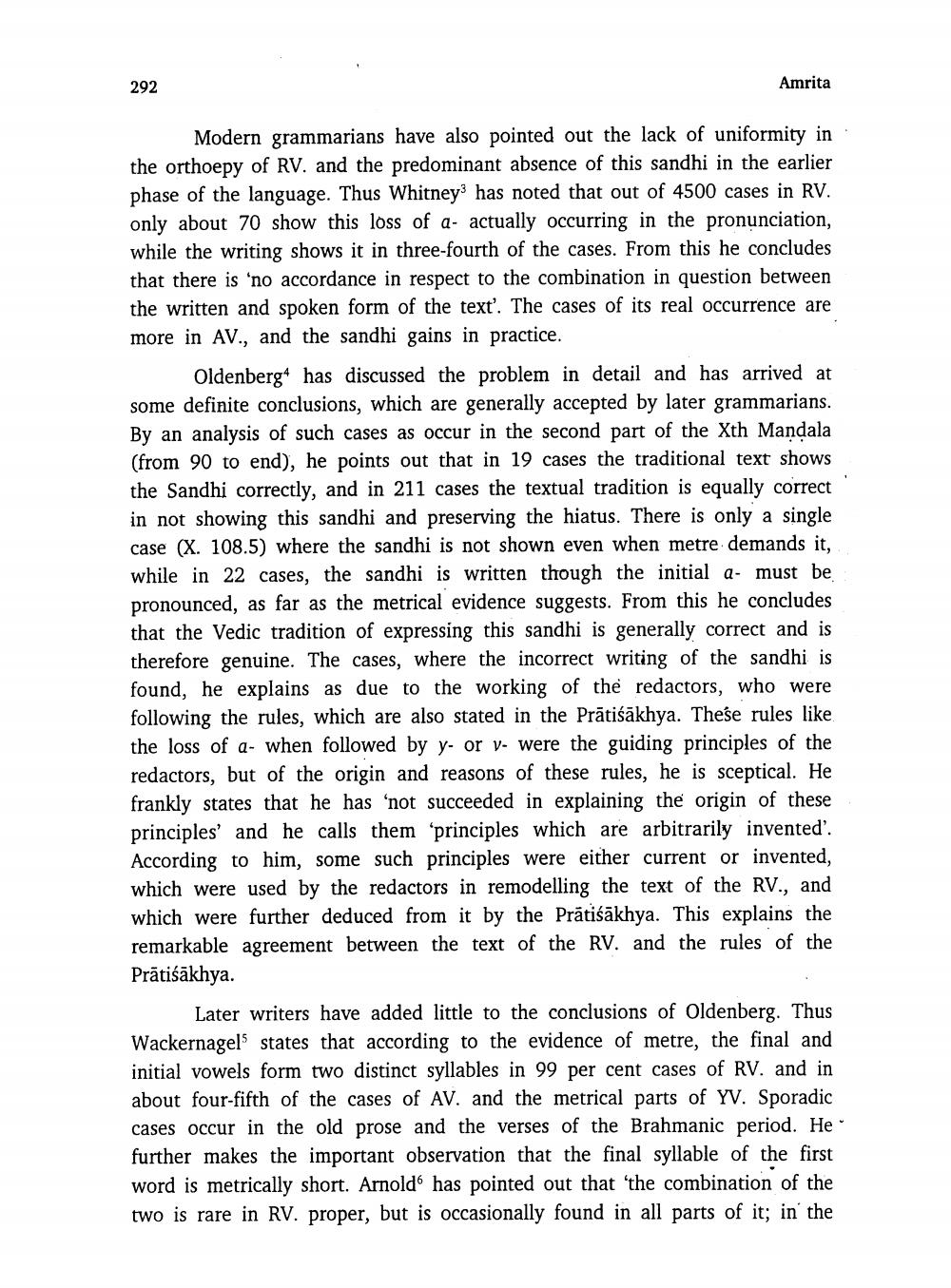________________
292
Amrita
Modern grammarians have also pointed out the lack of uniformity in the orthoepy of RV. and the predominant absence of this sandhi in the earlier phase of the language. Thus Whitney has noted that out of 4500 cases in RV. only about 70 show this loss of a- actually occurring in the pronunciation, while the writing shows it in three-fourth of the cases. From this he concludes that there is 'no accordance in respect to the combination in question between the written and spoken form of the text. The cases of its real occurrence are more in AV., and the sandhi gains in practice.
Oldenberg“ has discussed the problem in detail and has arrived at some definite conclusions, which are generally accepted by later grammarians. By an analysis of such cases as occur in the second part of the Xth Mandala (from 90 to end), he points out that in 19 cases the traditional text shows the Sandhi correctly, and in 211 cases the textual tradition is equally correct in not showing this sandhi and preserving the hiatus. There is only a single case (X. 108.5) where the sandhi is not shown even when metre demands it, while in 22 cases, the sandhi is written though the initial a- must be pronounced, as far as the metrical evidence suggests. From this he concludes that the Vedic tradition of expressing this sandhi is generally correct and is therefore genuine. The cases, where the incorrect writing of the sandhi is found, he explains as due to the working of the redactors, who were following the rules, which are also stated in the Prātiśākhya. These rules like the loss of a- when followed by y- or v- were the guiding principles of the redactors, but of the origin and reasons of these rules, he is sceptical. He frankly states that he has 'not succeeded in explaining the origin of these principles and he calls them 'principles which are arbitrarily invented'. According to him, some such principles were either current or invented, which were used by the redactors in remodelling the text of the RV., and which were further deduced from it by the Prātiśākhya. This explains the remarkable agreement between the text of the RV. and the rules of the Prātiśākhya.
Later writers have added little to the conclusions of Oldenberg. Thus Wackernagels states that according to the evidence of metre, the final and initial vowels form two distinct syllables in 99 per cent cases of RV. and in about four-fifth of the cases of AV. and the metrical parts of YV. Sporadic cases occur in the old prose and the verses of the Brahmanic period. He further makes the important observation that the final syllable of the first word is metrically short. Arnold has pointed out that 'the combination of the two is rare in RV. proper, but is occasionally found in all parts of it; in the




